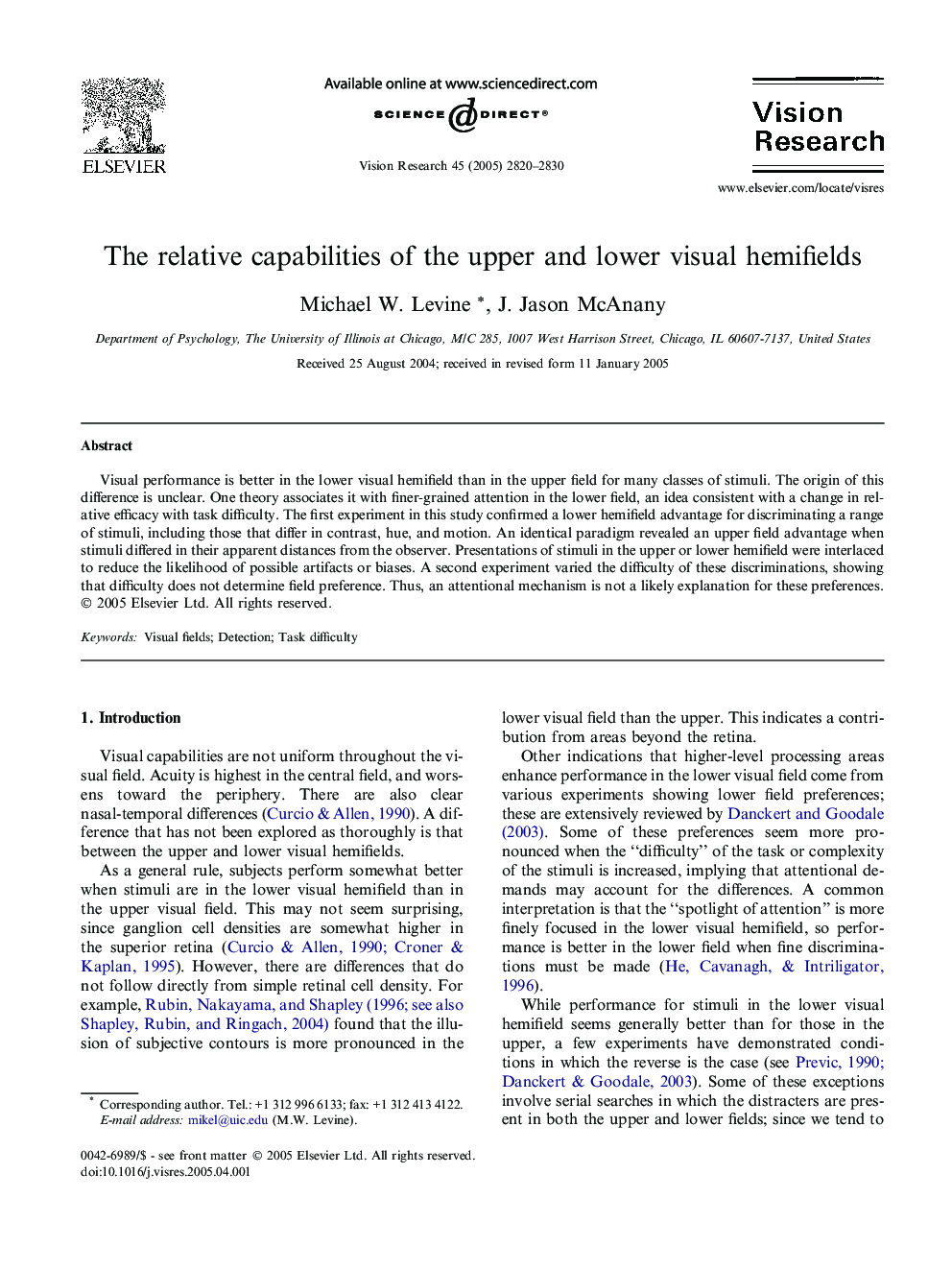| Article ID | Journal | Published Year | Pages | File Type |
|---|---|---|---|---|
| 4036152 | Vision Research | 2005 | 11 Pages |
Visual performance is better in the lower visual hemifield than in the upper field for many classes of stimuli. The origin of this difference is unclear. One theory associates it with finer-grained attention in the lower field, an idea consistent with a change in relative efficacy with task difficulty. The first experiment in this study confirmed a lower hemifield advantage for discriminating a range of stimuli, including those that differ in contrast, hue, and motion. An identical paradigm revealed an upper field advantage when stimuli differed in their apparent distances from the observer. Presentations of stimuli in the upper or lower hemifield were interlaced to reduce the likelihood of possible artifacts or biases. A second experiment varied the difficulty of these discriminations, showing that difficulty does not determine field preference. Thus, an attentional mechanism is not a likely explanation for these preferences.
